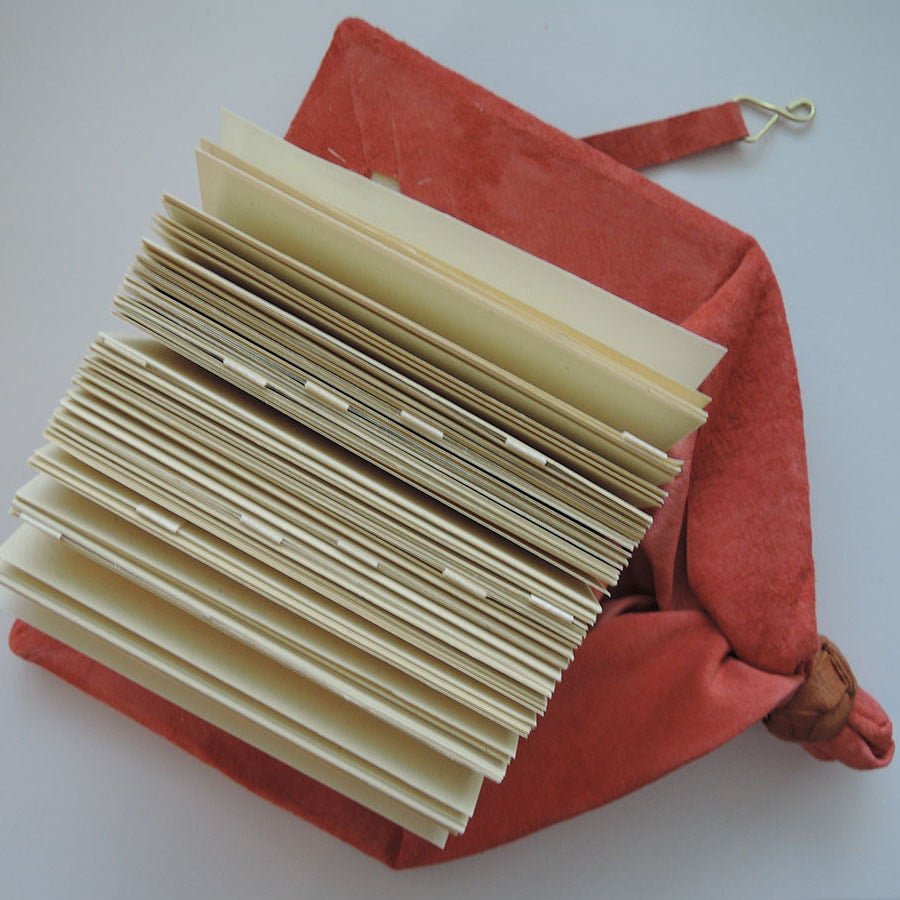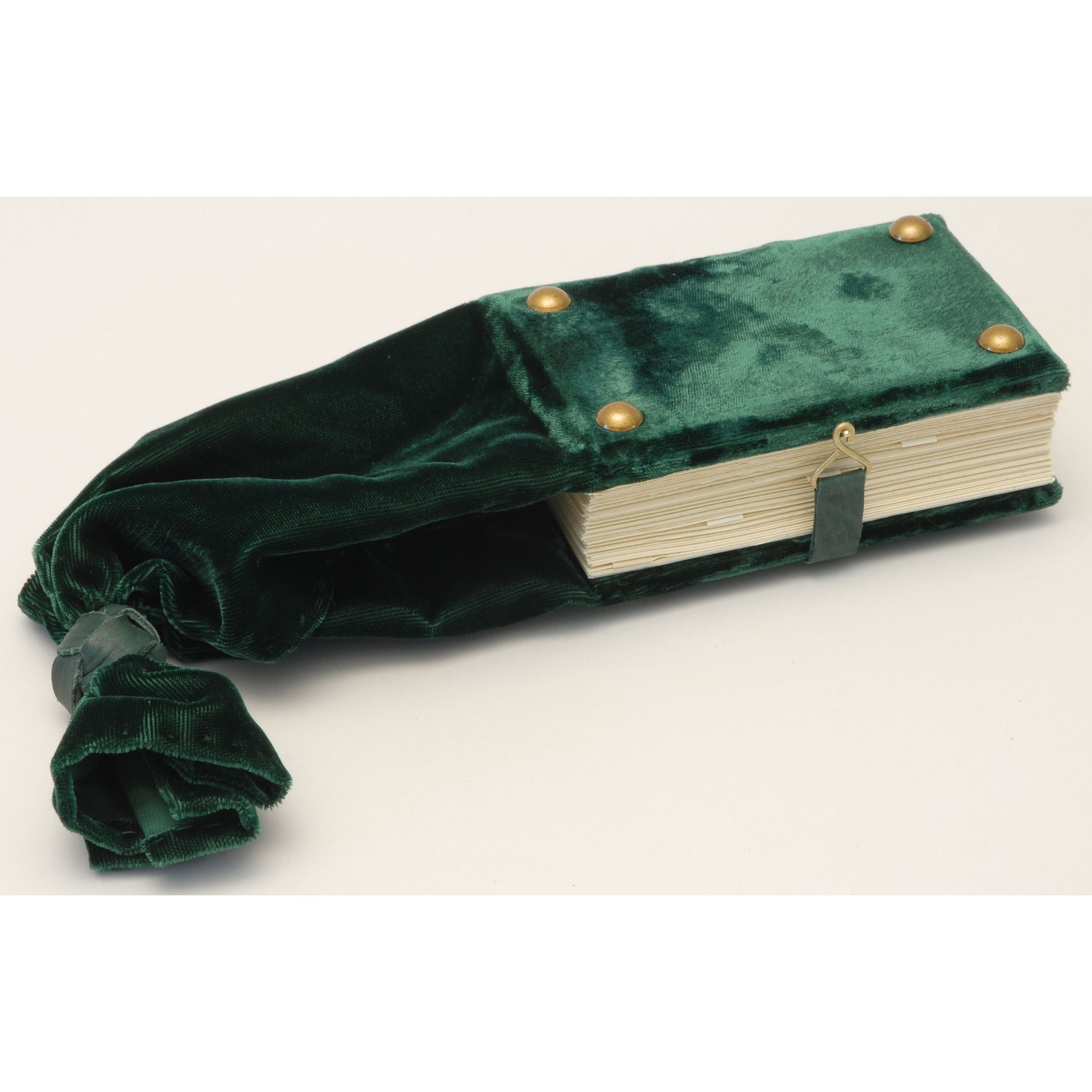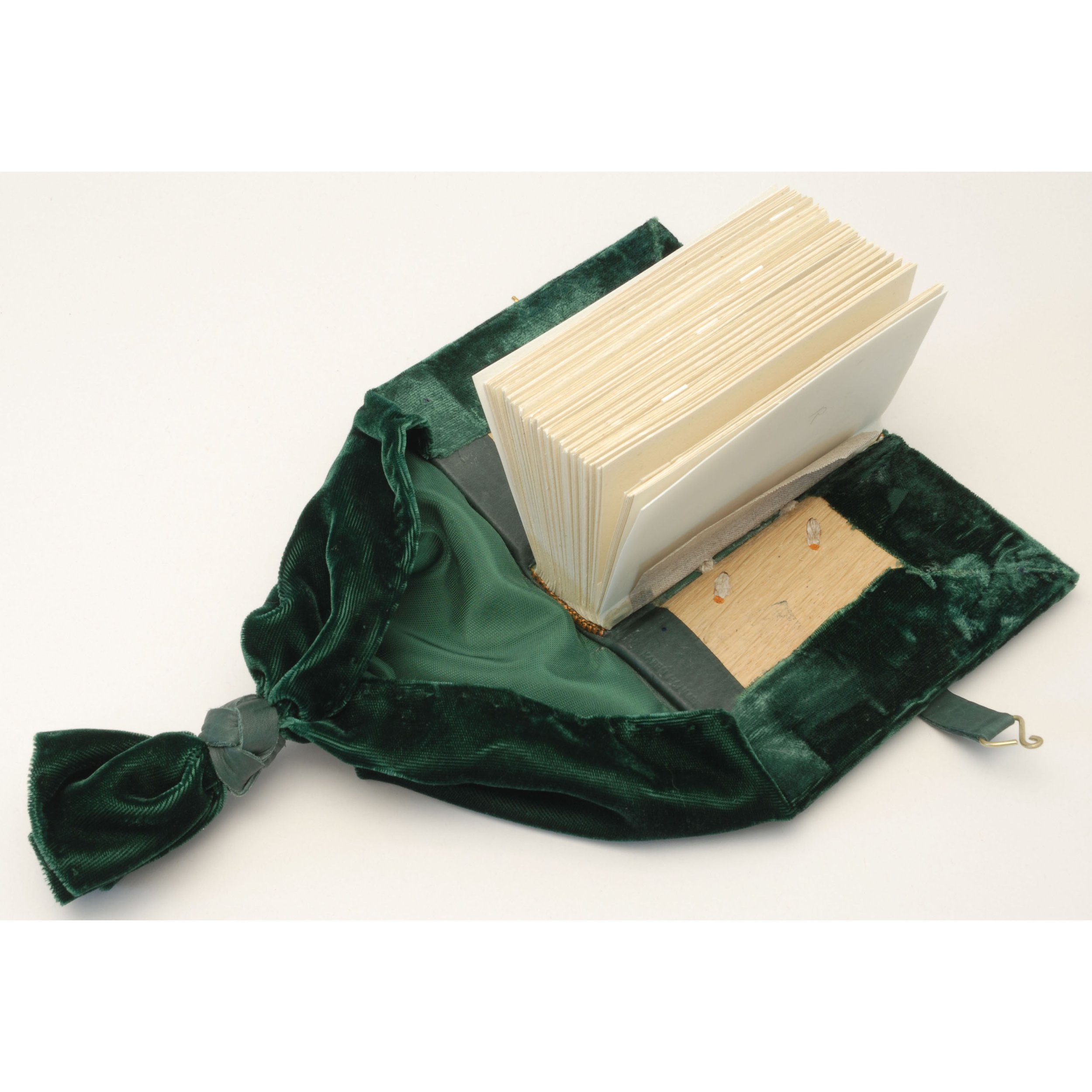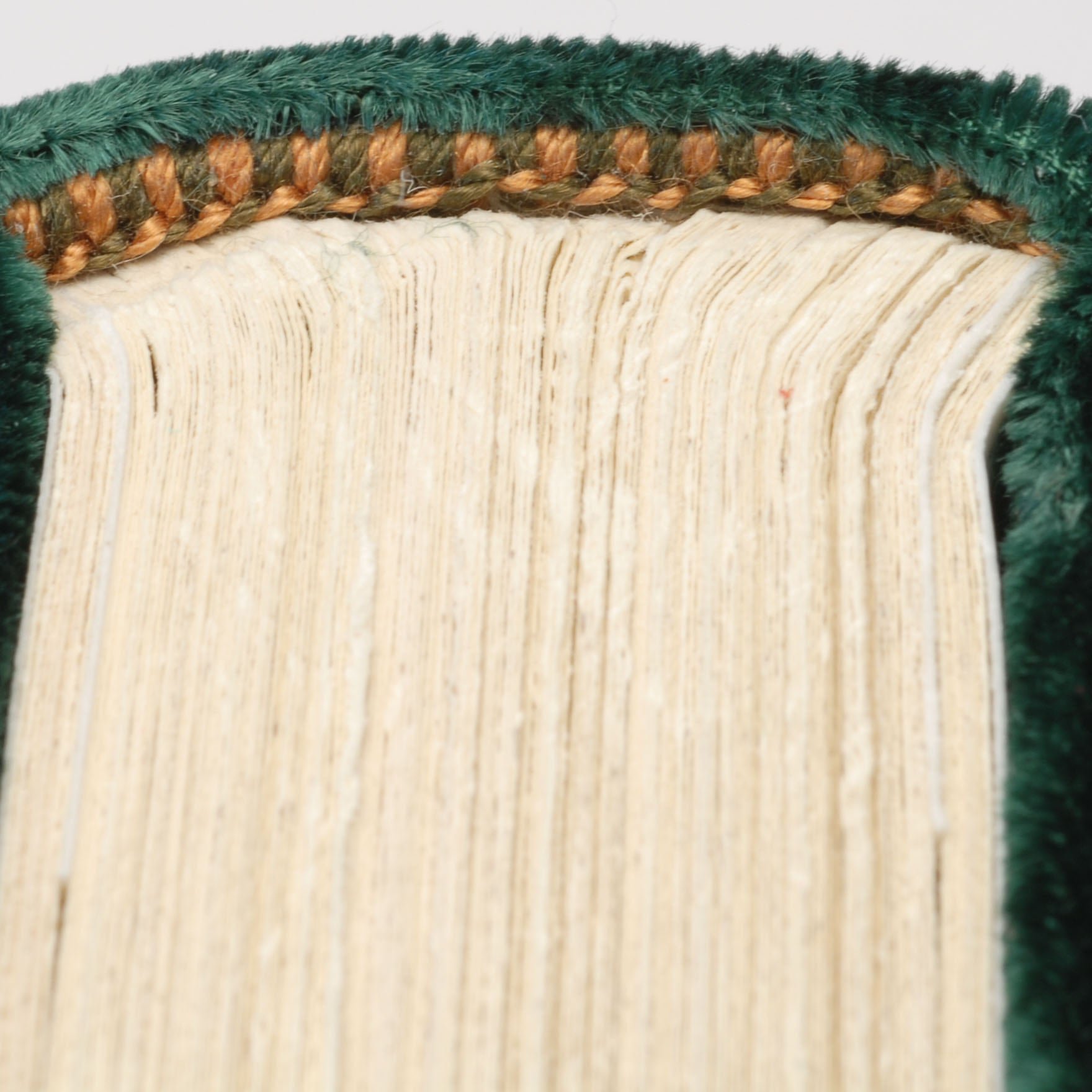 Image 1 of 4
Image 1 of 4

 Image 2 of 4
Image 2 of 4

 Image 3 of 4
Image 3 of 4

 Image 4 of 4
Image 4 of 4





Girdle Binding: models
The girdle book is a medieval binding structure featuring a long extension of covering material, which could be attached to a traveler’s belt. This material extends from the tail of the book, so the text can be read while the book is still attached to the reader’s belt. The extension often terminates in a decorative knot or hook. The twenty-three extant girdle books date from 1454 to 1579. There are hundreds of representations of these bindings in paintings and other visual arts.
This model displays many features typical of medieval bindings plus some extras: text block sewn on double supports, wooden boards shaped all around with special attention given to the inside spine edge to match the text block’s natural shoulder, spine linings extend beyond the text block and attach to the inside of the boards, text block laced onto boards and cords pegged in, sewn headbands also laced into the boards, strap and clasp, corner bosses, vellum fore edge markers, Turk’s head knot to finish extension at the binding’s tail.
These models were made as demos while teaching a bookbinding workshop. They may include marks or notes made to aid students. Colors and patterns will vary. Cutaway bindings revealing structural features are sometimes available.
Workshop handout not included with model but available online here.
The girdle book is a medieval binding structure featuring a long extension of covering material, which could be attached to a traveler’s belt. This material extends from the tail of the book, so the text can be read while the book is still attached to the reader’s belt. The extension often terminates in a decorative knot or hook. The twenty-three extant girdle books date from 1454 to 1579. There are hundreds of representations of these bindings in paintings and other visual arts.
This model displays many features typical of medieval bindings plus some extras: text block sewn on double supports, wooden boards shaped all around with special attention given to the inside spine edge to match the text block’s natural shoulder, spine linings extend beyond the text block and attach to the inside of the boards, text block laced onto boards and cords pegged in, sewn headbands also laced into the boards, strap and clasp, corner bosses, vellum fore edge markers, Turk’s head knot to finish extension at the binding’s tail.
These models were made as demos while teaching a bookbinding workshop. They may include marks or notes made to aid students. Colors and patterns will vary. Cutaway bindings revealing structural features are sometimes available.
Workshop handout not included with model but available online here.
The girdle book is a medieval binding structure featuring a long extension of covering material, which could be attached to a traveler’s belt. This material extends from the tail of the book, so the text can be read while the book is still attached to the reader’s belt. The extension often terminates in a decorative knot or hook. The twenty-three extant girdle books date from 1454 to 1579. There are hundreds of representations of these bindings in paintings and other visual arts.
This model displays many features typical of medieval bindings plus some extras: text block sewn on double supports, wooden boards shaped all around with special attention given to the inside spine edge to match the text block’s natural shoulder, spine linings extend beyond the text block and attach to the inside of the boards, text block laced onto boards and cords pegged in, sewn headbands also laced into the boards, strap and clasp, corner bosses, vellum fore edge markers, Turk’s head knot to finish extension at the binding’s tail.
These models were made as demos while teaching a bookbinding workshop. They may include marks or notes made to aid students. Colors and patterns will vary. Cutaway bindings revealing structural features are sometimes available.
Workshop handout not included with model but available online here.
